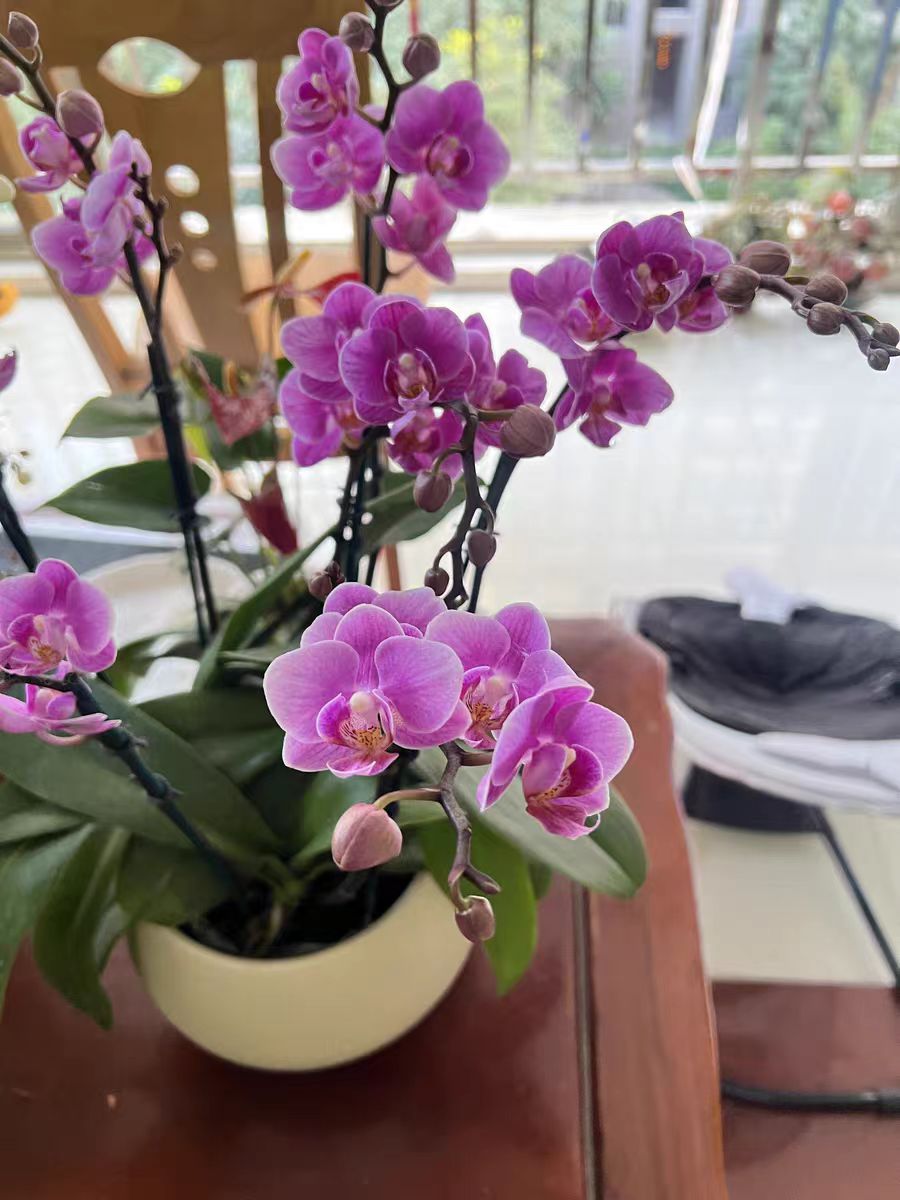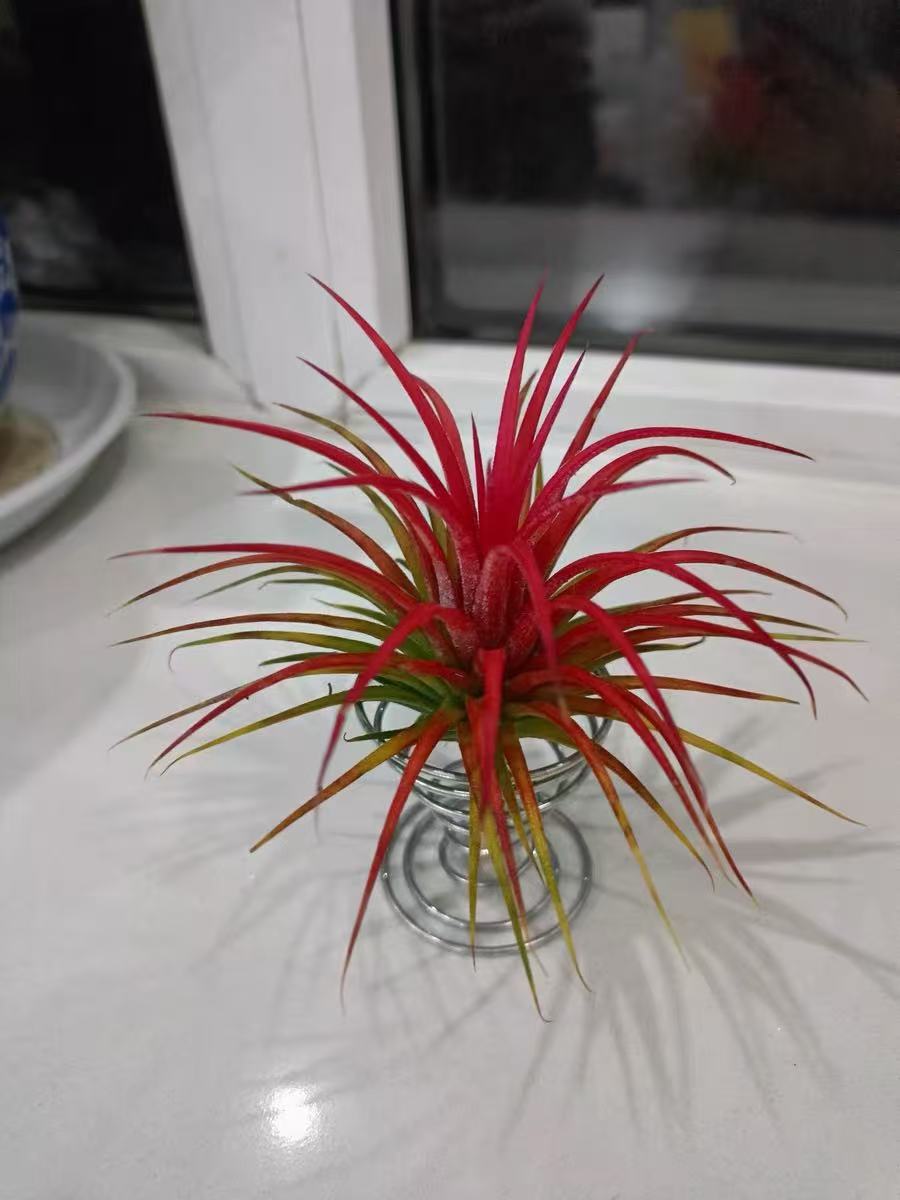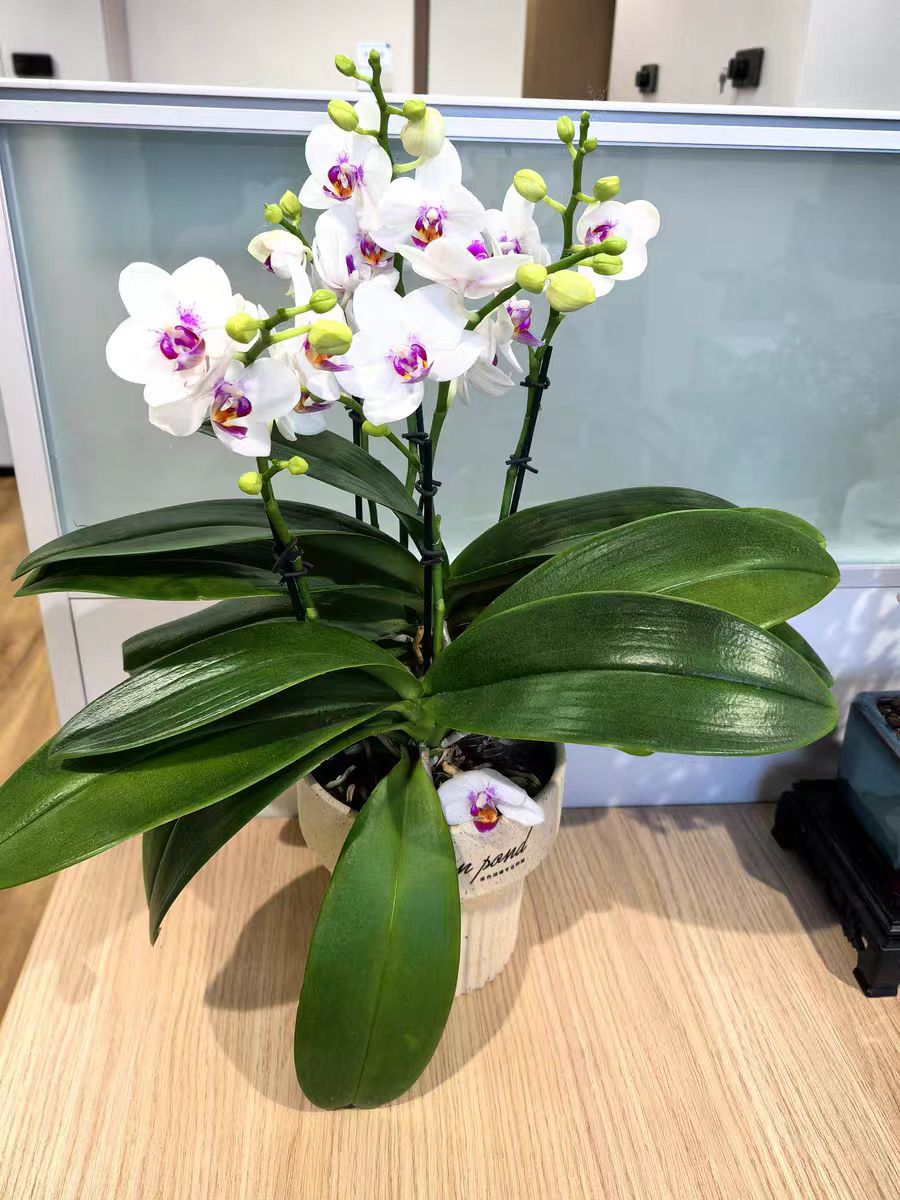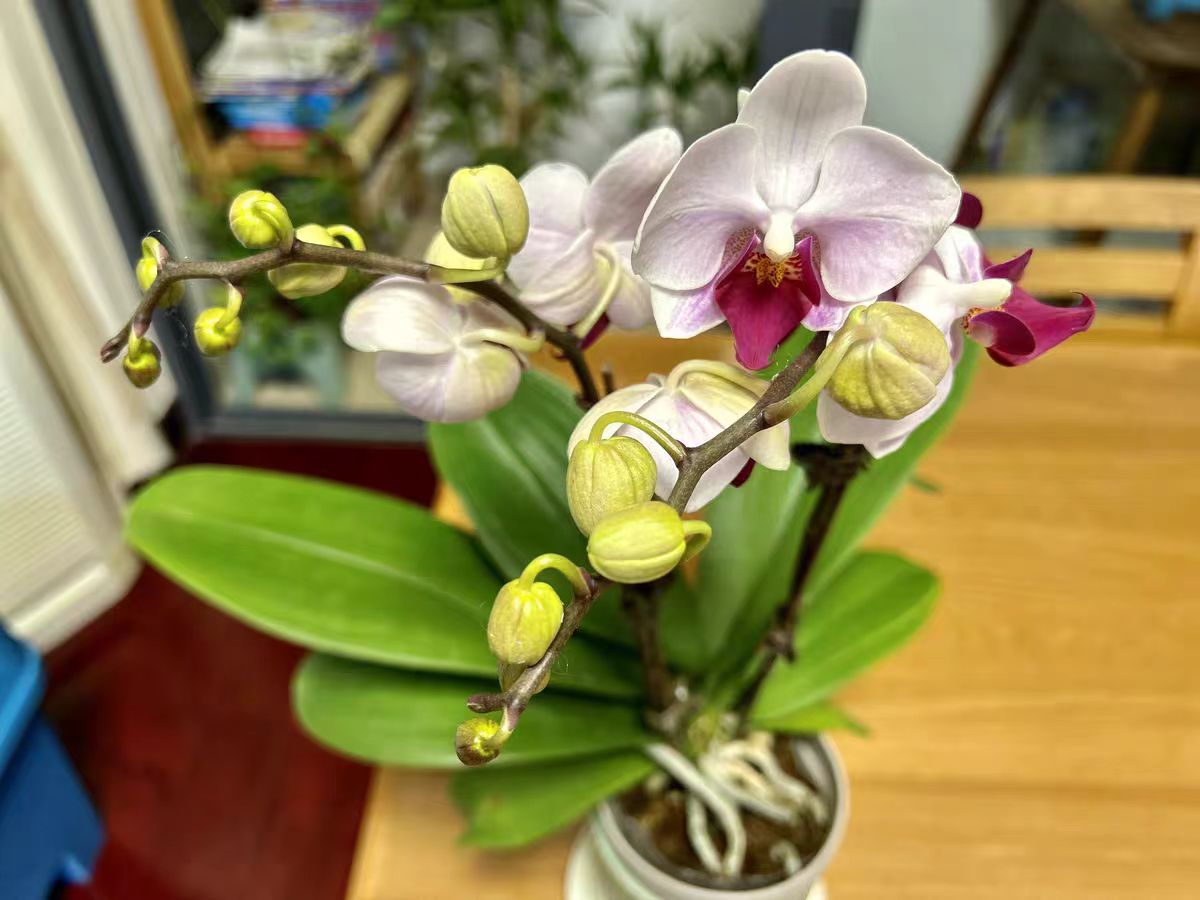For novice flower growers, the most frequently pondered question is: Can Phalaenopsis orchids be planted in potting soil? When planted in potting soil, will the roots of Phalaenopsis orchids rot?
Phalaenopsis orchids are epiphytic orchids. Their roots need to attach to plant materials rather than grow in the soil. Therefore, traditional soil is not entirely suitable for the growth of Phalaenopsis orchids. However, improved potting soil, especially those that are loose, breathable, have good drainage and water - retention capabilities, and are rich in nutrients, can be used to plant Phalaenopsis orchids. Peat soil or special orchid soil is a good choice, and these soils can better meet the growth requirements of Phalaenopsis orchids.
When choosing potting soil, the following points should be noted:
Air permeability: The roots of Phalaenopsis orchids need sufficient oxygen for respiration, so the soil must have good air permeability.
Drainage: Phalaenopsis orchids are afraid of waterlogging, and the soil must be able to quickly drain excess water to avoid root rot.
Nutrients: The soil should be rich in nutrients such as nitrogen, phosphorus, and potassium, which are required by Phalaenopsis orchids, to promote their healthy growth.
Before using potting soil to plant Phalaenopsis orchids, it is recommended to disinfect the soil to kill potential pathogens and pests and reduce the risk of the plants getting diseases.
When using potting soil to plant Phalaenopsis orchids, root necrosis is not an inevitable result, but there is indeed a certain risk. This mainly depends on factors such as the quality of the soil, watering management, and environmental conditions.
Soil quality: As mentioned before, choosing potting soil with good air permeability and drainage is crucial for the growth of Phalaenopsis orchids. If the soil is too heavy or has poor drainage, it is easy to cause waterlogging, which in turn can lead to root rot and necrosis. Therefore, when planting Phalaenopsis orchids, be sure to choose high - quality potting soil.
Watering management: Phalaenopsis orchids have special water requirements. They need to maintain a certain level of humidity but cannot be in a waterlogged state for a long time. Both over - watering and under - watering can cause root problems. Generally speaking, the watering frequency and amount should be adjusted according to the dryness and wetness of the soil and the seasonal changes. When watering, make sure that the water evenly penetrates the soil and avoid directly wetting the leaves and flowers.
Environmental conditions: Phalaenopsis orchids are native to tropical rainforest areas and have certain requirements for temperature and humidity. If the environmental conditions are not suitable, such as too low a temperature or too high a humidity, it may affect the growth of Phalaenopsis orchids and increase the risk of root necrosis. Therefore, when planting Phalaenopsis orchids, a suitable growth environment should be provided, such as keeping the temperature between 15℃ and 20℃ and avoiding sudden temperature changes and low - temperature environments.
Phalaenopsis orchids can be planted in potting soil, but the key lies in choosing high - quality, breathable soil, and reasonably managing watering and providing a suitable growth environment. Only in this way can the risk of root necrosis be reduced and the healthy growth of Phalaenopsis orchids be ensured.
Can Phalaenopsis orchids be planted in potting soil?

Share with
Tagged in :




Leave a Reply